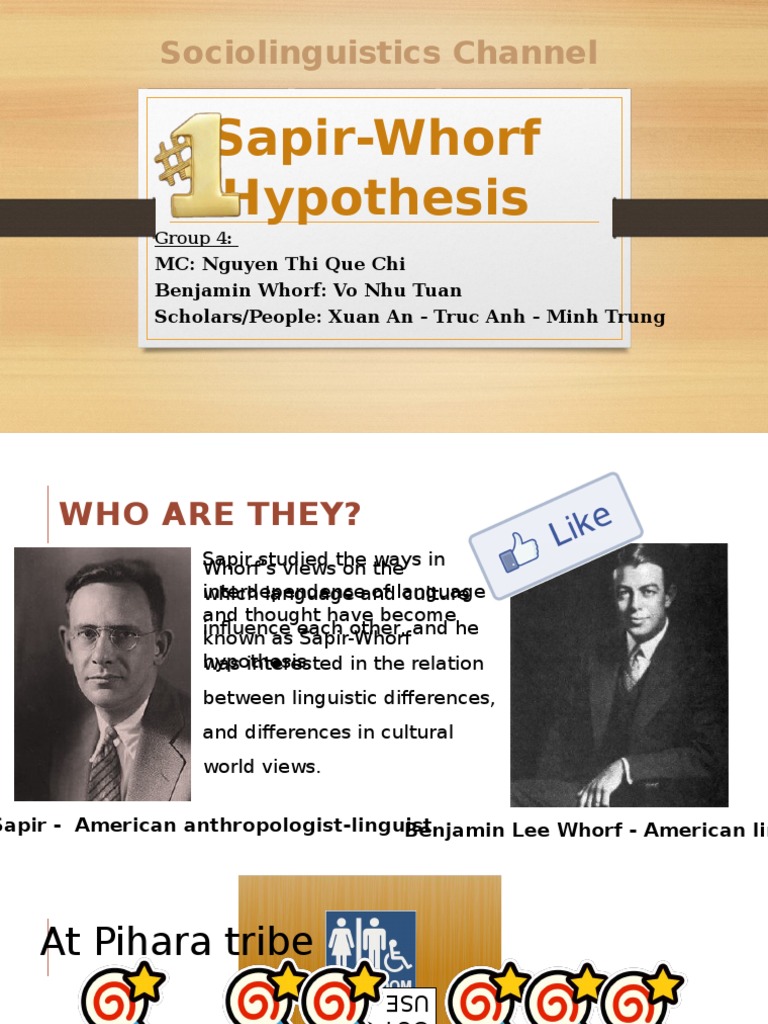The Sapir-Whorf Hypothesis, or linguistic relativity, posits that the structure of a language influences the speaker’s worldview and cognition. While this hypothesis has sparked considerable scholarly interest since its inception, it has also faced substantial criticism from various quarters. This criticism ranges from philosophical and empirical challenges to broader cultural and cognitive concerns. Within this discourse, it becomes essential to examine the differing opinions on the hypothesis, exploring the complexity of language and thought in a nuanced manner.
One of the most significant criticisms arises from the ambiguity inherent in the hypothesis itself. The supporters of linguistic relativity have often failed to delineate clearly between “strong” and “weak” forms of the hypothesis. The strong version suggests that language determines thought, while the weak version posits that language merely influences thought. Critics argue that the conflation of these two interpretations can lead to misunderstandings about the implications of linguistic relativity. The lack of a cohesive framework in defining the hypothesis undermines its credibility and renders productive discourse challenging. This ambiguity not only clouds empirical research but also complicates theoretical discussions about cognition.
Empirical studies have not uniformly supported the claims made by the hypothesis, creating further dissonance in its acceptance. A notable critique centers on the methodological rigor of research supporting the Sapir-Whorf Hypothesis. Scholars have pointed out that many studies, which claim to demonstrate linguistic relativity, often lack rigorous experimental designs. Additionally, critics note that the results frequently extract language from its sociocultural context, failing to account for the multifaceted nature of human experience and cognition. Such methodological deficiencies leave the conclusions drawn from these studies open to skepticism and challenge the robustness of evidence supporting linguistic relativity.
Moreover, critics have highlighted the overemphasis on language in shaping cognition and perception. While it is undeniably true that language plays a pivotal role in communication and thought processes, this perspective risks oversimplifying the intricate tapestry of human cognition. The disciplines of cognitive psychology and neuroscience suggest that thought and perception may evolve independently of linguistic constructs. For instance, studies involving non-verbal species and infants demonstrate the capacity for complex reasoning and understanding without reliance on language. This common observation raises deeper questions regarding the necessity of language in shaping thought and hints at alternate mechanisms that contribute to cognitive development.
Additionally, the Sapir-Whorf Hypothesis has come under fire for its perceived ethnocentric implications. Critics argue that the hypothesis inadvertently promotes cultural determinism, asserting that individuals from different linguistic backgrounds possess immutable cognitive frameworks. This perspective can lead to stereotyping and reductionism, wherein cultural variations are attributed solely to language differences. Such a deterministic view neglects the fluidity and adaptability of human cognition in the face of diverse experiential factors, suggesting that environmental and contextual influences should also be considered in tandem with linguistic ones. The failure to appreciate such complexity can perpetuate dogmatic thinking, which stifles cross-cultural understanding and collaboration.
The relationship between language and thought is further complicated by the phenomenon of bilingualism. Bilingual individuals often navigate between different linguistic systems, each carrying distinct conceptual frameworks. This begs the question: does the cognitive processing of a bilingual individual differ when operating in distinct languages? Some studies suggest that bilingualism may offer flexible cognitive frameworks, allowing individuals to shift their thought patterns based on the linguistic context. This fluidity challenges the notion that language strictly dictates cognition, revealing a more intricate interplay between linguistic capabilities and cognitive processes.
Additionally, contemporary insights from linguistic anthropology and sociolinguistics emphasize the importance of context over structure. Linguistic practices are situated within broad social and cultural networks, where meaning is co-constructed through interaction rather than confined to linguistic form alone. Such an understanding encourages a more dynamic view of language, suggesting that meaning emerges from use rather than being exclusively dictated by inherent linguistic properties. This perspective calls attention to the role of social agents in shaping linguistic meaning and cognitive orientation, presenting a critique of the Sapir-Whorf Hypothesis that reflects current interdisciplinary discourse.
Finally, the Sapir-Whorf Hypothesis ignites discussions that resonate beyond the confines of linguistics or philosophy—it intertwines with pressing societal concerns, including issues of identity, power dynamics, and communication in an increasingly interconnected world. For instance, in the context of climate change and environmental activism, the language employed to describe ecological phenomena can significantly influence public perception and policy. The terminology surrounding environmental issues often shapes the urgency and relevancy of these discussions. When language fails to convey the science of climate change effectively, it may hinder collective action and delay much-needed responses.
In summary, while the Sapir-Whorf Hypothesis has generated considerable discourse about the relationship between language and thought, it remains fraught with criticism. Ambiguity, empirical shortcomings, ethnocentrism, the complexities of bilingualism, and the contextual nature of linguistic meaning all present challenges to the hypothesis’s validity. As scholars continue to explore the intricate interactions between linguistic expression and cognitive processes, it becomes ever clear that understanding human thought requires a holistic approach. In an age characterized by rapid change, our language has the potential to shape our perceptions and, ultimately, our responses to global challenges, making this ongoing analysis both relevant and essential.
